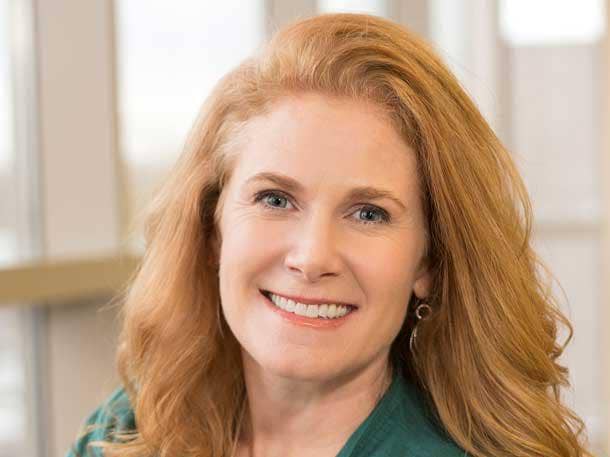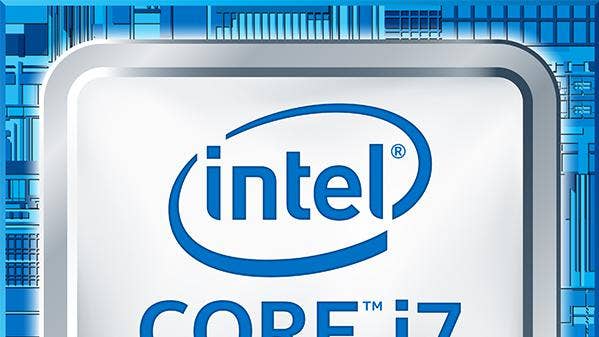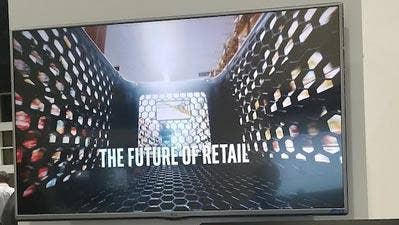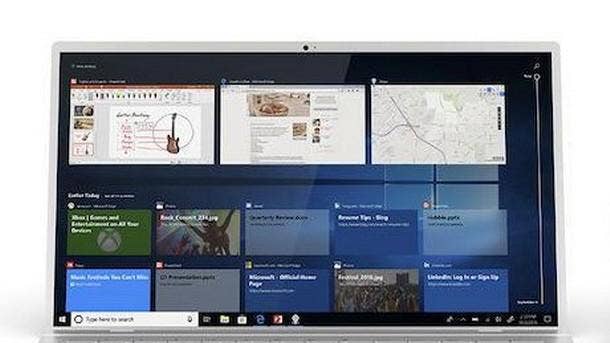Intel vPro Is Making Big Bets On Partner, Ecosystem Enablement, Exec Says
The chipmaker's remote IT management platform is making new investments in channel partners to support device-as-a-service models through a new ecosystem enablement team that is incorporating feedback into future product plans, Intel's Stephanie Hallford tells CRN.

Incorporating Partner Feedback Into Future vPro Plans
Intel's vPro business is making big investments in enabling ecosystem and channel partners to build device-as-a-service offerings and other kinds of services with the chipmaker's storied remote IT management platform, a top executive told CRN.
As the semiconductor giant sees a greater need for vPro's silicon-level remote IT capabilities due to the coronavirus pandemic, the Santa Clara, Calif.-based company has been working closer with channel partners to push vPro processor sales because they've "got the DNA" to translate the benefits of the platform into real-world value for customers, according to Stephanie Hallford, vice president of the Client Computing Group and general manager of business client platforms at Intel.
[Related: Intel Sees Laptop CPU Sales Spike, But PC Slowdown Expected]
"We've tended to be very OEM design win-driven, and I think now we've altered our position because we understand how important the partners are and how important the ecosystem is to bringing the true value of the hardware," she said in a recent interview. "And so we've really upped our investments and communication and co-working with our ecosystem partners, like Accenture."
Intel is expected to announce the launch of its next-generation vPro processors, Comet Lake, this month as its rival, AMD, is preparing to challenge the 14-year-old remote IT management brand with new Ryzen Pro 4000 processors for enterprise-grade laptops.
With the upcoming vPro processors, Intel is making a new sales and marketing push for the brand that is putting a greater focus on what partners can offer and how they can use it to create new device-as-a-service models for their businesses, according to Hallford. But the company is also making a bigger effort to incorporate partners in the planning and development of future products.
Part of that effort includes a new ecosystem enablement team within Hallford's vPro division that is working with partners of all kinds, from solution providers to independent software vendors, to support new integrations and incorporate partner feedback into future product plans, according to Hallford.
"So, for instance, with [device-as-a-service], we're talking to one of the partners that's building out a particular capability that they want to put into their DaaS services," Hallford said. "We're trying to build that upstream into our product planning, so that we enable that in a future platform, all the way down to how do we co-sell and solve problems together."
In her interview with CRN, Hallford discussed her biggest priorities for vPro this year, why channel partners are primed to take advantage of vPro, how vPro is enabling partners to build new device-as-a-service models and how the vPro sales strategy is changing. The following is an edited transcript.

What are your priorities for the vPro business this year?
For us, we've got this long-standing experience in remote manageability. I would say [there has been a] renewed investment in the last couple years on security. Are we communicating it effectively so end users and OEM sales teams are truly taking advantage of it? Are we really communicating how folks can take advantage of some of these things effectively?
[Recently], we launched our first direct vPro campaign. We're going to be doing heavy social media and blogging [about how IT professionals work, among other things]. And through things of that nature, we're hoping we just start communicating more about the value that vPro brings. The awareness level is is good. The understanding of how to make the most of it is probably lower. And so you'll see us this year spending a lot of time co-marketing and co-educating with the OEMs but also more directly.
The real focus this year, though, you'll see us driving is that security message. With Comet Lake, it'll be the first platform where Intel Hardware Shield is required in order to get that vPro badge. The lead that we'll be talking through is really the benefits out of the box: If you're deploying new hardware, new software out of the box, you're going to be more secure thanks to our cooperation with Microsoft and the work that we've done with our OEMs to build Hardware Shield in. We have a campaign that we've now run for a year with Microsoft. That will shift to be security-oriented, so we're getting to help all these new users and realities help them activate and utilize the devices to the fullest.

Between OEM partners and channel partners, have you heard any success stories in terms of partners who have been able to effectively communicate the right message to customers in terms of what the benefits are and how they can take full advantage of the vPro platform?
The service providers, the channel partners are by far the best, because I think they have the DNA of speaking in terms of full solutions: how do I help you in your environment? And so we have started to work more closely with a lot of our channel partners to make sure that the messaging we provide is more pass-through so that they can take it and use it without a lot of rework. And that's been a new evolution for us. We've tended to be very OEM design win driven, and I think now we've altered our position because we understand how important the partners are and how important the ecosystem is to bringing the true value of the hardware. And so we've really upped our investments and communication and co-working with our ecosystem partners, like Accenture.
We just recently had an announcement with Datto where we have integrated our EMA, which is the cloud-friendly mobile version of AMT. Datto integrated that into their solution. I saw a YouTube video where one of their customers was talking about the benefits of vPro. And they're happy to see that Datto has incorporated it into their suite of solutions, their remote management technology.
So, I've actually seen the ecosystem partners, that group of everyone from the distributors to particularly the solution providers, being very effective in speaking in user value terms and how do we solve your problems, simply because they've got the DNA to do that. Whereas the OEMs, like Intel, have come from the history of being more hardware-centric with the specs and features. And I think we know certainly Intel has evolved to realize it really needs to come from [a perspective of] what problems are we solving? Not specs and features. And that's been a big change in how we're designing vPro and all of our platforms: What problem are we solving, not how many gigabytes are we throwing at it?

Related to that, what do the sales motions look like for Intel vPro laptops or PCs? Is it more based on what kind of laptop the customer is looking for? Or what management capabilities they want?
There is a basic refresh cycle that even companies like Intel, our IT organization, have. They get a budget, and they work through a regular cadence of how much of their network can they refresh annually. So there is that reality. What we have seen though, is real demand increase.
Of course, with the move from Windows 7 to Windows 10, that has forced a faster refresh and a realization that the hardware is necessary to light up a lot of the software benefits. And so I think that has driven an increase in the commercial sales motions across the board. And the OEMs have built in their own differentiation as well, whether it be security with [Lenovo] ThinkShield or HP SureStart or Dell SafeBIOS, they've all built in their differentiations for the IT providers.
But again, the one that I think has surprised us as well is just that need for performance. Even in our own IT shops, they have now realized that they've got certain types of personas that can't get their job done unless they're literally using vPro [Core] i7. And yet there are other types of personas that are essentially front-line workers that are more web-based.
The ability to define personas and the ability to put the right device with the right persona, it's still an aspiration for almost all IT shops, but it's important. And I think we'll see more of that in the future, and, as we're headed with our vPro roadmap: how do we help give them the device telemetry, data, that helps them understand those usages in those user models, so they can spend their dollars wisely. Maybe not everybody needs a workstation, but this group of data crunchers does, and so they're going to want a vPro workstation. This group is more the mobile warriors, but needs higher battery life, and so they might take our Athena vPro versions, our mobile innovation best for mobile go-getters program that we're rolling out right now.

Intel's vPro business has formed this new ecosystem enablement team to expand integration partnerships and beyond. Can you talk about why that team was formed?
I think there is, again, a really strong alignment between Intel's strategy and many of the ecosystem partners. I think the DNA of their ability to provide solutions and solve problems is really additive to the vPro platform goodness. And so just philosophically, we've really invested in how do we focus on being the platform of choice — the most secure, best manageability, highest performing, stable — but allow hooks that our ecosystem partners can drive value off of? it needs to be a win-win.
If we can provide that baseline platform, hardware and software level of goodness, they can build their own solutions or [device-as-a-service] models, even if it's simply end-to-end lifecycle management. How do we [get to] one plus one equals three? So with that philosophy, we've taken and reprioritized dollars to make sure that we've got a strong team that's building those relationships and understanding where is that win-win in the Venn diagram and how do we not compete with those partners but enable them.
[We're asking questions such as,] where are they headed with their DaaS models? Where are partners headed with their security solutions? Where are they doing financing and leasing, even if it's at that early level of DaaS that we can build programs together? So the team is responsible for both that business relationship but also that technical enabling: how do we then go integrate that?
I mentioned the EMA integration into Datto recently. We have strong relationship with Accenture and Atos — and CompuCom is a long-time partner. We do a lot of engagement with CDW in the U.S. Also Zones. Kind of the gamut of players. But we found that they are so increasingly important in the chain now, and they have so much more value that they can add on top of what we provide that I really wanted to make sure we had a team understanding how to click in together and make sure that we're planning our roadmap for as much of a win-win environment as we can. You'll see us this year doing a lot with all those partners. You'll see co-marketing with almost all of those players.

You're talking about ISVs like Datto but also channel partners like Accenture, Atos and Zones. Does that constituency that the ecosystem team works with include OEMs as well?
That's kind of different. OEMs are our sell-to [channel], not necessarily sell with? Well, we do both. We sell-to sell and sell-with. It's a little bit of a different motion. But in the sell-with, there's some similarities, but to some degree, it's trying to be that basic platform and allow them an opportunity to differentiate on top. And in some of those cases, the OEMs have services businesses they're trying to drive that do compete with some of those other partners. So for us, we're saying, okay, we've got a unique foundational place. Let's not compete with where they're driving their own value-add. Let's just kind of be that foundational layer, and then we all win together.
How recently was that ecosystem enablement team put together?
Last year we started building it out. And then they got new leadership at the end of last year, now we are continuing to focus and build out that effort. And not only within my own team, but there's also increases in that team in our sales and on our marketing groups as well. It's sort of across Intel in realization and augmentation. But on my team, particularly, it's relatively new and on the other groups, it's being heightened. A lot of it was more server-driven in the past. And now I think the client side and the endpoint side, at least in the sales and marketing, it's become so important.
With this remote workforce reality we're all in, I think PCs are coming into their own again. I think mobile phones have been so important in the past and still are. But now folks are realizing, oh, wow, my kids are studying at home. Mom and dad are trying to get work done. [People now] realize, wow, I need to be outfitted properly. I think it'll actually change things even further right now with a lot of our partners in the PC space.
One of my takeaways from what you were saying is that it sounds like Intel's increasing engagement, specifically with channel partners, on the ecosystem enablement level, but also in doing more sales and marketing activities together. Do I have that correct?
Oh yeah. Absolutely. It's end-to-end. It's really ensuring that their needs and their strategies are mapped into our product planning. So, for instance, with DaaS, we're talking to one of the partners that's building out a particular capability that they want to put into their DaaS services. We're trying to build that upstream into our product planning, so that we enable that in a future platform, all the way down to how do we co-sell and solve problems together. And that means alignment of dollars and even working with our OEMs to align their dollars with our dollars — with CDW as an example — putting all of that power together, so that we're not all spending separately but at least towards the same end. I think it's an end-to-end effort right now, upstream to downstream.